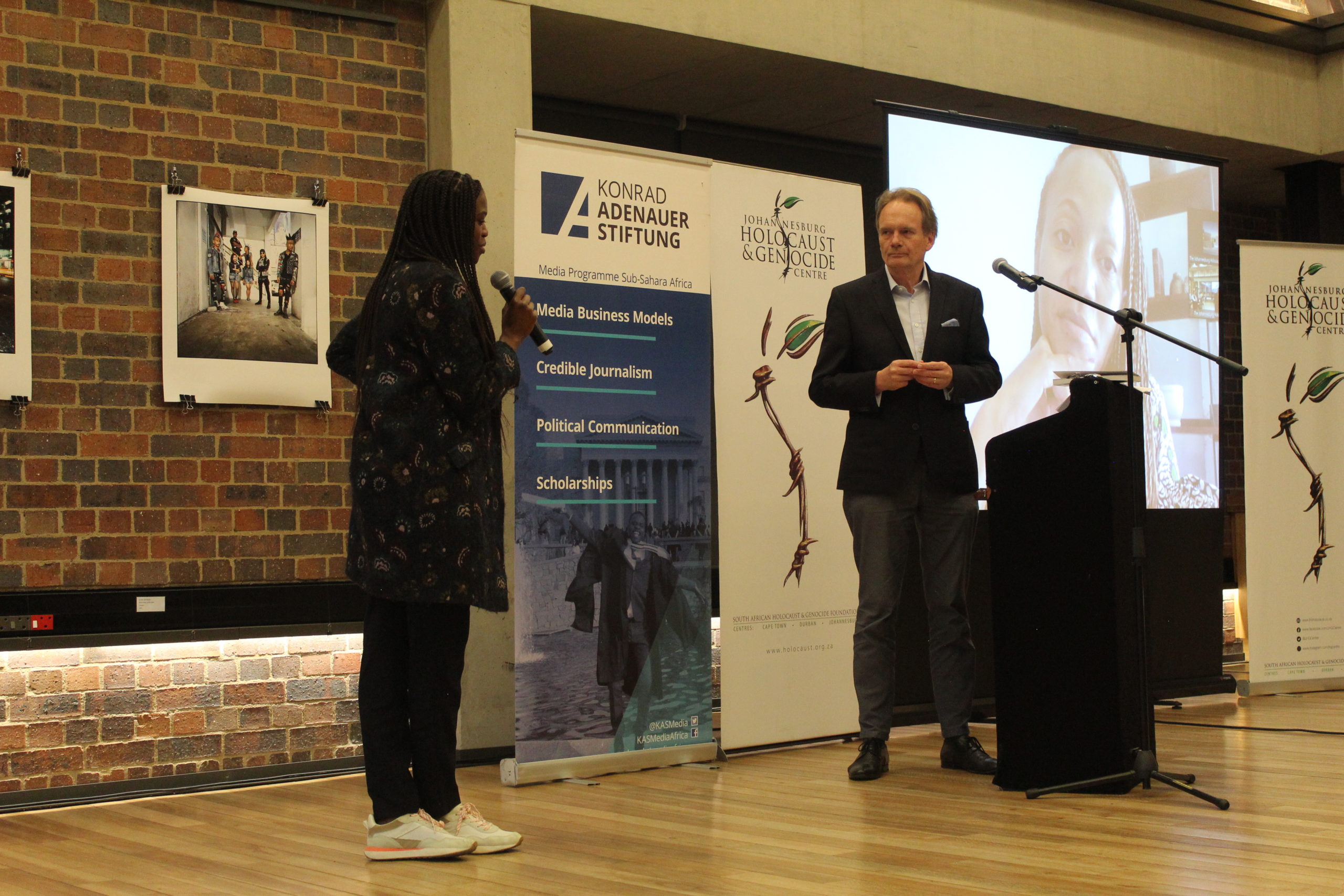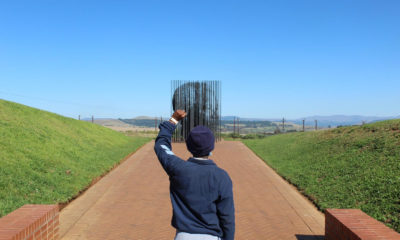
Featured Item

Examining dynamics of hate on social media
“I’m shocked at how much hatred and racism there is on social media in South Africa,” said Cristoph Plate, the director of the Media Programme Sub-Saharan Africa at the Konrad Adenauer Stiftung (KAS). “Insults, slurs, threats. That’s why we decided to do something about it.”
Plate was speaking at the launch of a new study titled, “The dynamics of racism, antisemitism, and xenophobia on social media in South Africa” held at the Johannesburg Holocaust & Genocide Centre (JHGC) on 19 October. The study was produced jointly by the University of Cape Town (UCT), the Kaplan Centre for Jewish Studies, the JHGC, and KAS.
“The media played a huge part in the Rwandan genocide in 1994,” said Tali Nates, the director of the JHGC. “There was no social media in those days, but as a historian, I know that genocide starts with words.”
Nates said the same ancient metaphors that spur hatred – tropes, comparison to animals, “othering” – are spread and amplified by social media. “With new technology, you can influence millions,” she said.
Professor Adam Mendelsohn, the director of the Kaplan Centre for Jewish Studies, said that racism, antisemitism, and xenophobia on social media in South Africa had never been studied systematically before, hence the importance of this new work. He said that although physical antisemitic incidents are rare in the country, hate abounds in cyberspace.
The phenomena of racism, antisemitism, and xenophobia are often studied in isolation, Mendelsohn said. In that respect, this study is a major contribution to understanding the dynamics, which recur and overlap, “The haters use the same stratagems,” he said. “They are savvy, and work out how to evade the moderators, for instance by using vernacular languages.”
Dr Gavaza Maluleke, a lecturer in the department of political studies at UCT and one of the authors of the study (along with Mendelsohn and UCT’s Dr Thierry Rousset), joined the conversation by Zoom from Chicago. She noted that social media platforms like Facebook, Twitter, and TikTok can be used to mobilise people for good and bad purposes. Social media thrives on controversy and polarisation, and this study noted how it had amplified racial divisions. It sometimes unites those on the black far left with those on the white far right, for example in derogatory commentary about foreigners in South Africa.
Maluleke remarked that what starts online can often manifest offline, as extremists find common cause and create a hate-filled community. When mainstream social media act against them, they re-emerge on smaller, unmoderated channels like Telegram and Signal.
Rousset, who is from Mauritius, emphasised that social media allows so many forms of connection and identity but can also reinforce boundaries, such as between black and white, left and right, settlers and indigenes, and citizens and outsiders.
All the speakers stressed that legislation to combat online hatred exists, but many people don’t know how to access it. Social media companies make it difficult to flag extremist content and users feel the effort that it takes to report abuses isn’t worth it. “Social media is built to encourage people not to flag,” Rousset said. “Social media companies are commercial enterprises. They want us to get angry, spend more time on the platform, and get others angry and so on. They have made us the gatekeepers, as they invest a pitiful amount in content moderation.” Rousset noted that Meta (which owns Facebook) has less than 20 000 content moderators worldwide, dealing with billions of posts each day.
Melanie Fuma, one of the coders and annotators for this study, said she was shocked by the online antisemitism she encountered dealing with the raw data. “I didn’t realise white people could be so mean to other white people. I learned that there are varying degrees of whiteness.”
Speaking from the audience, the national director of the South African Jewish Board of Deputies (SAJBD), Wendy Kahn, explained how difficult it was to get the police and authorities to act against antisemitic posts on social media. SAJBD Chairperson Professor Karen Milner said the recent letter issued by Dis-Chem regarding race and hiring policies “caused every antisemite to crawl out from under their rock” to lambaste the company’s Jewish owner.
Nates related how she and other museums have written many letters to social media companies to counter Holocaust denial and distortion, prompting excuses and equivocation. She acknowledged, however, that this pressure had led to minor improvements. “Now with this serious research, which I will send to social media companies, we have a weapon to use that we never had before,” Nates said. “We simply cannot give up.” She said the rigorous methodology developed for this report could be used in other contexts.
The JHGC intends to work with schools to introduce the study’s findings to the classroom. It’s available online here: https://bit.ly/3N0xs6x










